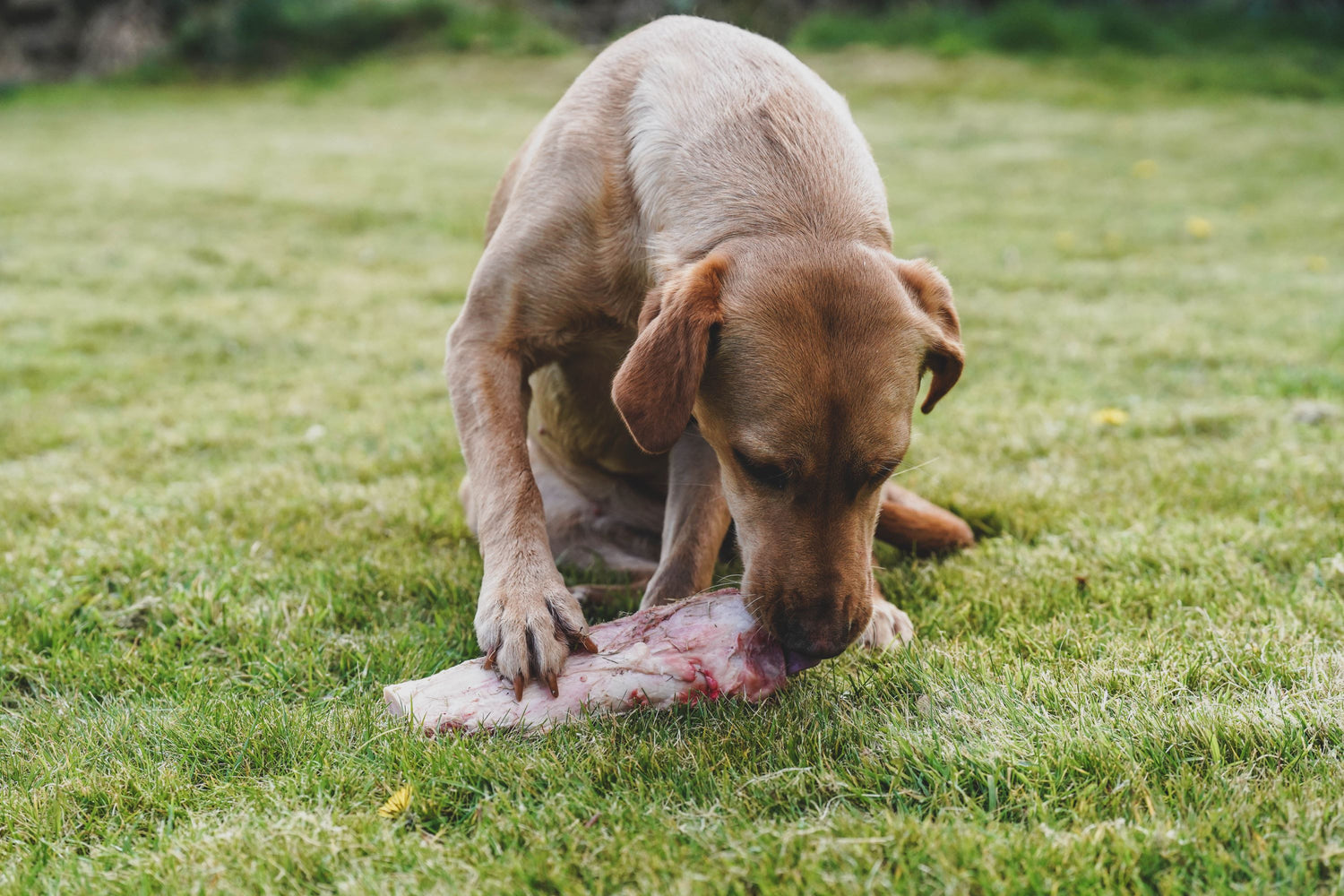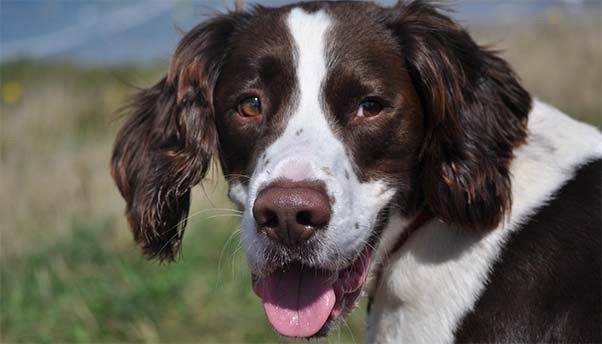Are raw meaty bones the answer to your dog’s health issues?

Dental and Periodontal Health in Dogs.
Raw meaty bones are often the last addition to a raw feeding plan. Concerns over, and a lack of knowledge of how to feed them can mean many of us simply leave them out of our dog’s menu altogether. However, taking a carnivore’s natural way of eating into consideration, the stripping, shredding and chewing of meat directly from a carcass or bone should be top of the list. Many vets who support raw feeding feel we are underusing this vital aspect of a raw diet and potentially leaving our dogs prone to health issues, despite being a raw feeder.
Canine gum disease and dental health are big topics nationwide. Many veterinary websites state that by the age of only two years, 80% of dogs have some level of disease.
Both the science and a huge volume of anecdotal feedback point to diet being vital in the prevention of gum and dental disease in dogs, and this is where DIY raw feeding fits in.
The bacteria on a dog’s teeth are known as periodontal bacteria. Not only do they influence the health of the gums and teeth but are also linked with the progression of disease elsewhere in the body, in particular the heart and cardiovascular system, the lungs and even the placenta*.
It is known that the periodontal bacteria collect as a biofilm in the mouth and when in balance, provide valuable antibacterial properties to the mouth through the saliva. As the mouth is regularly exposed to the environment it is expected that the biofilm and bacteria need to rebalance frequently, relying on the support of beneficial bacteria to do so. Unpublished data from the pet microbiome laboratory Biome4Pets, spanning biome results from the last 14 years, show that when a fresh food diet is fed – including raw fresh food – the bacteria in the mouth are at their healthiest**. This data demonstrates that the type of mouth bacteria which forms from a diet of processed pet food is less desirable and healthy than that formed from a raw diet.
Unbalanced and unhealthy bacteria or biofilm can also be transported via the blood stream to other parts of the dog’s body. A paper published in 2022*** highlights its effect on disease in the kidneys, the liver, the digestive system (including IBD, Inflammatory Bowel Disease) and the skeletal system (including arthritis).
The paper even links an unbalance of periodontal bacteria and unbalanced biofilm to obesity, another hot topic in the canine wellbeing field.
If you are looking to make a difference to your dog’s dental and gum health we would recommend considering a switch to fresher food, no matter what stage of life your dog has reached. It appears from the above studies that doing so would leave your dog’s entire body in healthier shape, reducing the likelihood of kidney ailments, inflammation, digestive concerns and allergies. If your dog is experiencing any of those ailments, raw meaty bones could be a big part of their recovery.
Here at The Farmer’s Dog we hope to bring you more data, studies and perhaps even veterinary interviews on this subject in the near future.
* “The cytokines and other inflammatory mediators produced in gingivitis/periodontitis result in local tissue destruction and may reach significant levels affecting the cardiovascular system or placental tissues. The oral cavity may also serve as a direct reservoir for bacterial contamination of the lungs…”
The effects of dental disease on systemic disease (vet small animal journal) 98
https://www.sciencedirect.com/science/article/abs/pii/S0195561698501027?via%3Dihub
** www.biome4pets.com Lab reports and data available on request.
‘’The mouth is home to a rich bacterial biofilm on surfaces that are exposed to the external environment. In healthy individuals, this biofilm is in harmless balance with the local tissues, which are bathed in salivary fluid containing a rich mixture of antibacterial substances. Once something upsets this balance, bacteria in the biofilm proliferate and can cause local disease (gingivitis or periodontitis) and can be transported via the blood stream to other parts of the body’’
*** The Relationship Between Periodontal Infection and Systemic and Distant Organ Disease in Dogs (veterinary small animal practice north America) 22
https://www.sciencedirect.com/science/article/abs/pii/S0195561621001455
1350 dogs, chewing has a protective effect, dogs had progressively less calculus, less gingivitis and less periodontal bone loss if given access to chewing materials.
Harvey CE, Shofer FS, Laster L: Correlation of diet, other chewing activities and periodontal disease in North American client-owned dogs. J Vet Dent 13:101-109, 1996 https://pubmed.ncbi.nlm.nih.gov/9520786/
It was determined that regular consumption of up to 3 rawhide strips/d for 3 weeks was safe. Processed biscuits were sometimes effective in removing calculus from dog's teeth; however, biscuits were not as effective as the rawhide in removing supragingival calculus.
Effect of chewing rawhide and cereal biscuit on removal of dental calculus in dogs
https://pubmed.ncbi.nlm.nih.gov/2384322/ J ani vet med ass’ 90













